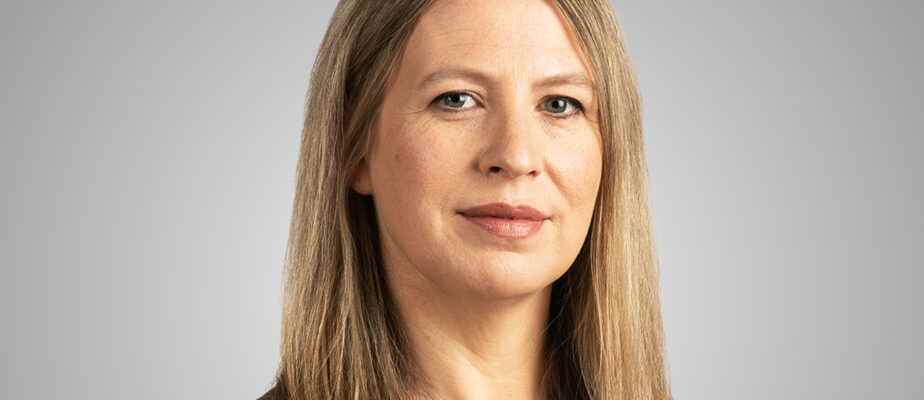In the village, everyone calls him Ben. The fleur-de-lis floats atop his garage. Every year, he is the one who organizes the Saint-Jean fire – the biggest in Quebec, they say, between the spruce branches. He worships René Lévesque, whose famous “see you next time”, oscillating between grief and hope, twisted his heart on a certain evening in May 1980.
Posted at 6:27
Tunisian by origin, Salah Ben Hassouna chose to live in Lebel-sur-Quévillon, a village in Jamésie where life revolves around the pulp and paper factory. Since the time he lives there, with his wife and three children, the electrician is part of the landscape. He took root. Solidly.
He is a native immigrant.
The surprising expression is from Raed Hammoud. The Montreal documentary filmmaker, himself a native of Niger and a native of Lebanon, has crisscrossed the regions of Quebec to meet newcomers who have integrated into their new land.
He drew this series from it, Native immigrants, broadcast on Tuesday on TV5. “We often talk about immigration in figures, in terms of manpower, never in terms of humans,” he explains to me. I wanted to put a face to immigration. »
The series tells, for example, the story of Jean-François Kacou, an Ivorian of origin who typed “economic development” in Google to see a position to be filled: general manager of the City of Percé.
Jean-François Kacou tried his luck. From Montreal, he rode to the end of the Gaspé Peninsula. He first saw the majestic Rock. Getting out of the car, the salty air reminded him of Grand-Bassam, in the Ivory Coast. The crush was immediate.
The next day, Jean-François Kacou was general manager of Percé. A godsend for his colleagues and employees, who say he is efficient and open-minded. For a bit, it feels like The great seduction…

PHOTO ROXANE DAGENAIS, PROVIDED BY THE PRODUCTION
Salah Ben Hassouna, Quévillonnais of Tunisian origin, in conversation with host Raed Hammoud
Salah Ben Hassouna has also left Montreal, where he was the tenant of a miserable apartment in the basement of a building. In Lebel-sur-Quévillon, he owns a large house by the lake. “I can tell you honestly, he confides in the series, I stopped existing and started to live since I arrived here. »
Obviously, the journey of any immigrant is strewn with pitfalls. It would be risky to generalize from these stories of successful integration.
Still, this series is good. For once, immigrants are not portrayed as victims of terrible systemic racism or as an existential threat to the Quebec nation.
They are portrayed without caricature, as they are. Happy and uneventful. Extraordinarily ordinary.
“Inevitably, the media mirror sends back the negative of immigration to us,” laments Raed Hammoud, who assumes the “candy pink” side of the series. “For all the racist insults an individual will receive, how many outstretched hands will we offer him? Will they be filmed? Will the media do a special hour on this? »
By dint of traveling through Quebec, Raed Hammoud has well documented some racist excesses. Not a lot. What he has seen above all is benevolence. Human warmth. Happiness. “As everywhere in the world, as long as people know each other, the barriers fall. We end up seeing what unites us rather than what divides us. »
Last week, Statistics Canada data showed how Quebec was affected by the aging of the population. Nothing pleasing. The proportion of people aged 65 and over will climb to 26% in 2043. That’s huge.
It will mean fewer workers to keep the economy going. So less money to fund schools, hospitals, elder care, etc.
Already, the labor shortage is hurting the region. “When I hear people talking […] immigration thresholds [trop élevés]I say to myself: them others in Quebec, they have it cursed”, ironically Gérald Lemoyne, former mayor of Lebel-sur-Quévillon, in Native immigrants. “ They are good at managing their offices, but I am not sure they are good at managing Nord-du-Québec. »
“Let’s take less, but let’s take care of it,” said Premier François Legault, according to whom excessively high immigration thresholds would threaten the ability of newcomers to integrate culturally and linguistically.
In Montreal, it is discussed. But in the region? Who can believe for a moment that the integration capacity of Saguenay, which has 1.3% immigrants, has reached its limit?
The problem, of course, is that only 27% of immigrants choose to settle outside the Montreal metropolitan area. How to encourage them to go elsewhere?
You have to explain [aux immigrants] that beyond Saint-Léonard, Montréal-Nord and Côte-Vertu, there is a way to integrate and work in the regions. You have to show that these perspectives exist, and that’s why I wanted to do this series.
Raed Hammoud, documentary filmmaker and host of the series Native immigrants
The Montreal documentary filmmaker confides that, if he had come across such a series during his struggling years serving tables at the Peel Pub, he might have gone to try his luck at the other end of the 20.
It remains a leap into the void. Dizzy. Leaving Montreal to settle in the regions also means leaving your community, abandoning your bearings.
And yet, immigrants would do well “to get out of their comfort zone and discover the land that welcomed them,” says Jean-François Kacou in Native immigrants.
He made the choice to jump into the void. At first, the people of Percé were a little skeptical, admits road worker Jason. They said to themselves: “What is he going to do here? He does not know the Gaspé! “, he says in the series. “But he made it his place. Like he says, it’s his town now. It is their home. »
The documentary series Native immigrants, directed by Félix Trépanier, is broadcast every Tuesday at 8 p.m. on TV5. It is also offered on the TV5Unis portal.
